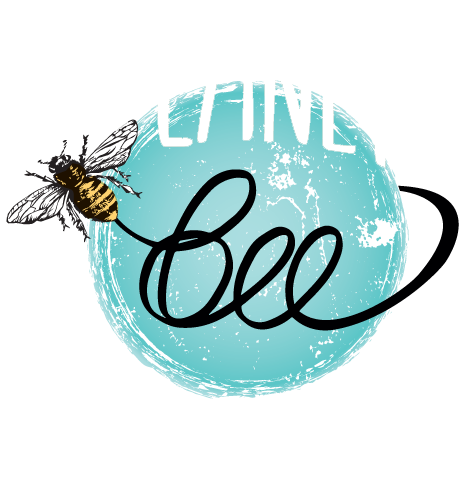
Why Bees are Dying

Entomologists are currently studying the reasons behind the high rate of bee die-off happening worldwide. Beekeepers across the United States lost 48.2% of their managed honey bee colonies from April 2022 to April 2023, according to preliminary results of the 17th annual nationwide survey conducted by the nonprofit Bee Informed Partnership. Although the total number of honey bee colonies in the country has remained relatively stable over the last 20 years (~2.6 million colonies according to the USDA NASS Honey Reports), loss rates remain high, indicating that beekeepers are under substantial pressure to recover from losses by creating new colonies every year.
What is a Colony Collapse Disorder (CCD)?
The term "Colony Collapse Disorder," or CCD, is often incorrectly used as a blanket term to refer to the trend of bee decline. However, this decline has several causes and takes several forms. CCD only refers to a phenomenon characterized by the sudden -- overnight, in some cases -- loss of the vast majority of the hive, leaving a queen, entire brood (larvae) cells, and full honey stores behind. No dead bees are found in collapsed hives, puzzling scientists and posing a significant challenge to studying the disease. The USDA has been studying the phenomenon since 2009 when it became apparent that Colony Collapse would not disappear independently.
CCD, while alarming, is not the main reason behind the mass die-off of the bees and is much less common today than when we first started hearing about it in the media.
Causes of Honey Bee Population Decline
Research on the possible causes of honey bee population decline is ongoing, and progress has been made! Most recent evidence points to a combination of factors as the culprit— according to the USDA, these factors include “parasites and pests, pathogens, poor nutrition, and sublethal exposure to pesticides.”
Parasites
Current scientific research indicates that parasites and the diseases they carry are the main threat to the lives of honey bees. The most dangerous parasite threatening beehives currently is a mite with a descriptive name: Varroa destructor. Commonly known as Varroa mites, these parasites often infect bees before they can even emerge as adults. Their parasitic relationship with the bees is similar to that of ticks and mammals; the main issue lies in the diseases the mites carry, such as the Deformed Wing Virus. A Varroa mite infestation can wipe it out when a hive is already weakened. Other parasites involved in collapsing hives include the small hive beetle, Aethina tumida, and Nosema spp., a microsporidian gut parasite.
Diseases
Weakened immune systems leave hives susceptible to bacterial and viral diseases as well. Two of the most well-known diseases that infect bees are the American Foulbrood and the Deformed Wing Virus. American Foulbrood affects less than a day old larvae, preventing them from surviving until adulthood. At the same time, the Deformed Wing Virus is transmitted through Varroa mites and prevents the bees from being able to fly.
Poor Nutrition
Some human farming practices, such as monoculture farming, are making it more challenging for the bees to forage a well-balanced diet. This is when only one crop is grown on a piece of land, limiting the bees’ diet to one type of pollen for extended periods. Think of it as if a human was limited to eating only strawberries for three months— not very healthy! These malnourished bees are more susceptible to chemical pesticides, parasites, and pathogens, as their immune systems aren't as strong.
Pesticides
Pesticides are also a contributing factor to honey bee decline. Scientists continue to research the effects of different types of pesticides and application methods on the health of bees. The most studied chemical culprit is a class of agricultural pesticides called "neonicotinoids." These chemicals are systemic, meaning the plant takes them into its vascular system and spreads it to all tissues. They are effective after only one application and affect only invertebrates, meaning they are less susceptible to runoff and less dangerous to humans, birds, livestock, etc. They're trendy. Theoretically, the pesticide shouldn't affect bees, who eat the pollen and nectar, not the plant's tissue. However, studies have found trace amounts of pesticides in pollen grains. Bees bring pollen back to their hives for food - one pollen grain with trace chemicals wouldn't be an issue, but scientists have found that the chemicals accumulate to critical levels within the beeswax. Pesticides also interfere with bee communication, relying on chemical and physical signals. Pesticide chemicals have been shown to alter their foraging behavior, communication, and larval development.
Pesticides lower the bees' immune systems, weakening the hive and leaving it open to parasitic infection.
Monoculture Agriculture
Monoculture agriculture, which involves growing large expanses of a single crop, limits the diversity of pollen and nectar sources, leading to nutritional deficiencies in bees. This practice also synchronizes the flowering times, creating periods of feast and famine for bees, where they experience an abundance of food for a short time followed by a scarcity. This lack of consistent and diverse forage can weaken bee colonies and contribute to their decline.
Climate Change
Climate change affects honey bees by altering the availability and timing of flower blooming, which disrupts their food supply. Additionally, extreme weather events and temperature fluctuations can directly harm bee colonies, further exacerbating the challenges they face.
Check out The Bee Informed Partnership Study on the USDA Website

